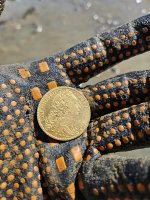BrutalBeck
Full Member
I started taking apart old cell phones a few months ago. Yes, there is precious metals in cell phones and electronics, especially gold. The motherboards are coated in gold. But, I know for myself that there isn't enough gold to make a fortune and you would need about a ton of just cell phones, just to make it worth the while. I talked to a guy on the east coast who runs a recycling company. He says they pay $1.62 per pound for old cell phones and electronics. Which tells me, obviously, that I have a very long way to go before I ever see any kind of profit from this. I have 11 cell phone boards, 1 old hose phone board, and 20 litium batteries so far.
What do you think and know about this subject?
What do you think and know about this subject?
Amazon Forum Fav 👍
Upvote
0


 I break them with a hammer and put into muratic acid and a small amount of chlorine bleach and the gold disappears into suspension in just seconds....precipitate with sodium metabisulfate ( a food additive )....then melt the gold powder. Its way more simple and clean than dealing with electronic scrap , except you still need to handle the acid carefully , do it outside in a well ventilated area , and do NOT breathe the vapors coming from the acid/cholorine mix....they are strong and will damage you quick. Aside from that the process is a lot safer , quicker and cleaner than processing escrap. And the leftover liquid , once the chlorine is gone is just muratic acid , you can use it to clean concrete with as it was intended.
I break them with a hammer and put into muratic acid and a small amount of chlorine bleach and the gold disappears into suspension in just seconds....precipitate with sodium metabisulfate ( a food additive )....then melt the gold powder. Its way more simple and clean than dealing with electronic scrap , except you still need to handle the acid carefully , do it outside in a well ventilated area , and do NOT breathe the vapors coming from the acid/cholorine mix....they are strong and will damage you quick. Aside from that the process is a lot safer , quicker and cleaner than processing escrap. And the leftover liquid , once the chlorine is gone is just muratic acid , you can use it to clean concrete with as it was intended.
